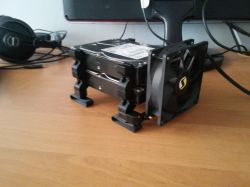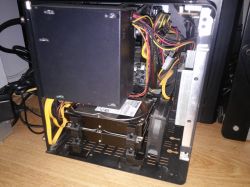kassans wrote:Boileros what are you achieving 110mb / s on? For me, on freenas or xigmanas a ZFS formatted disk on average 25mb / s; /
- old MEGARAID LSI controller, 512MB cache 3x 3TB WD red (5400rpm) raid5
- https://www.asrock.com/mb/intel/q2900-itx/ (hack with sawing PCIe x1 so that the x4 card is plugged in
- CentOS 7 ext4 + lvm, no tweaking
~ 100MB / s should easily produce any modern hard disk with sequential access (maybe depending on whether it is from the path on the rim or from the center of the plate). ZFS is a serious fs with built-in logical volume manager, deduplication, compression and raid-like (software) features. May take some resources to wake up. I don't know ZFS well, but if you have more than one disk, you can have it via softraid. Deduplication is unlikely to be turned on because it requires a lot of cpu and ram. Compression can be turned on, but I don't know if you have access to a terminal to check it out. For me, the same disks were making over 200MB / s even on a softraid, before buying the controller, but at the expense of the CPU.









